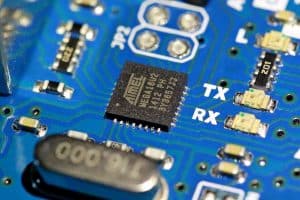Educational Technology: Smart Integration
With the rapid advancements in technology, the education sector is also undergoing a major transformation. Traditional methods of teaching are no longer sufficient to fulfill the needs of the current generation. This is where educational technology comes into play, providing new avenues to enhance the teaching and learning experience. Among these, Smart Integration is a revolutionary concept that has gained popularity in the recent years. In this article, we will explore the concept of Smart Integration in Educational Technology and its impact on the education sector.
What is Smart Integration?
Smart Integration is the seamless merging of technology with the education system. It involves the integration of digital tools and resources into traditional teaching methods, creating a more accessible and effective learning environment for students. This methodology enables educators to incorporate technology into the classroom curriculum, making learning more interactive and engaging for students.
Benefits of Smart Integration in Education
There are numerous benefits of incorporating Smart Integration in education. First and foremost, it enhances the overall effectiveness of teaching and learning. Traditional methods of teaching rely heavily on textbooks and lectures, resulting in a passive learning experience for students. However, with the integration of technology, educators can create a dynamic and interactive learning experience, encouraging students to actively participate in the learning process.
Moreover, Smart Integration promotes digital literacy among students, preparing them for the digital world of today. With the use of various digital tools and resources, students are exposed to a wide range of learning experiences, sparking their curiosity and boosting their critical thinking skills. This, in turn, lays the foundation for their future success in a highly digitized world.
The Impact of Smart Integration on Teachers
Smart Integration not only benefits students but also has a profound impact on teachers. With the support of technology, educators can create a more inclusive classroom environment, catering to the needs of all students. It also helps save time and effort on lesson planning and grading, allowing educators to focus more on student interactions and personalized learning.
Furthermore, Smart Integration promotes professional development among teachers. They are constantly encouraged to explore new methods and techniques of incorporating technology into their teaching, providing opportunities for growth and development.
Smart Integration Tools
There are various tools and resources that can be used for Smart Integration in education. Digital whiteboards, online collaboration tools, and educational apps are just a few examples. These tools provide a wide range of functionalities, such as interactive presentations, real-time feedback, and gamification of learning, making the learning experience more engaging and effective.
Conclusion
Educational Technology plays a crucial role in shaping the future of education. With the integration of technology, the traditional methods of teaching and learning are constantly evolving, providing a more personalized and interactive learning experience. Smart Integration is a significant aspect of educational technology, promoting digital literacy and catering to the individual needs of students. As we move towards a more digitized world, the role of Smart Integration in education will only continue to grow.
In conclusion, Smart Integration is the future of education, and its implementation is crucial for the holistic development of students. Educators and institutions must embrace this concept and continuously explore new ways of incorporating technology into their teaching methods to reap its benefits fully. It is time to revolutionize education, and Smart Integration is the key.









